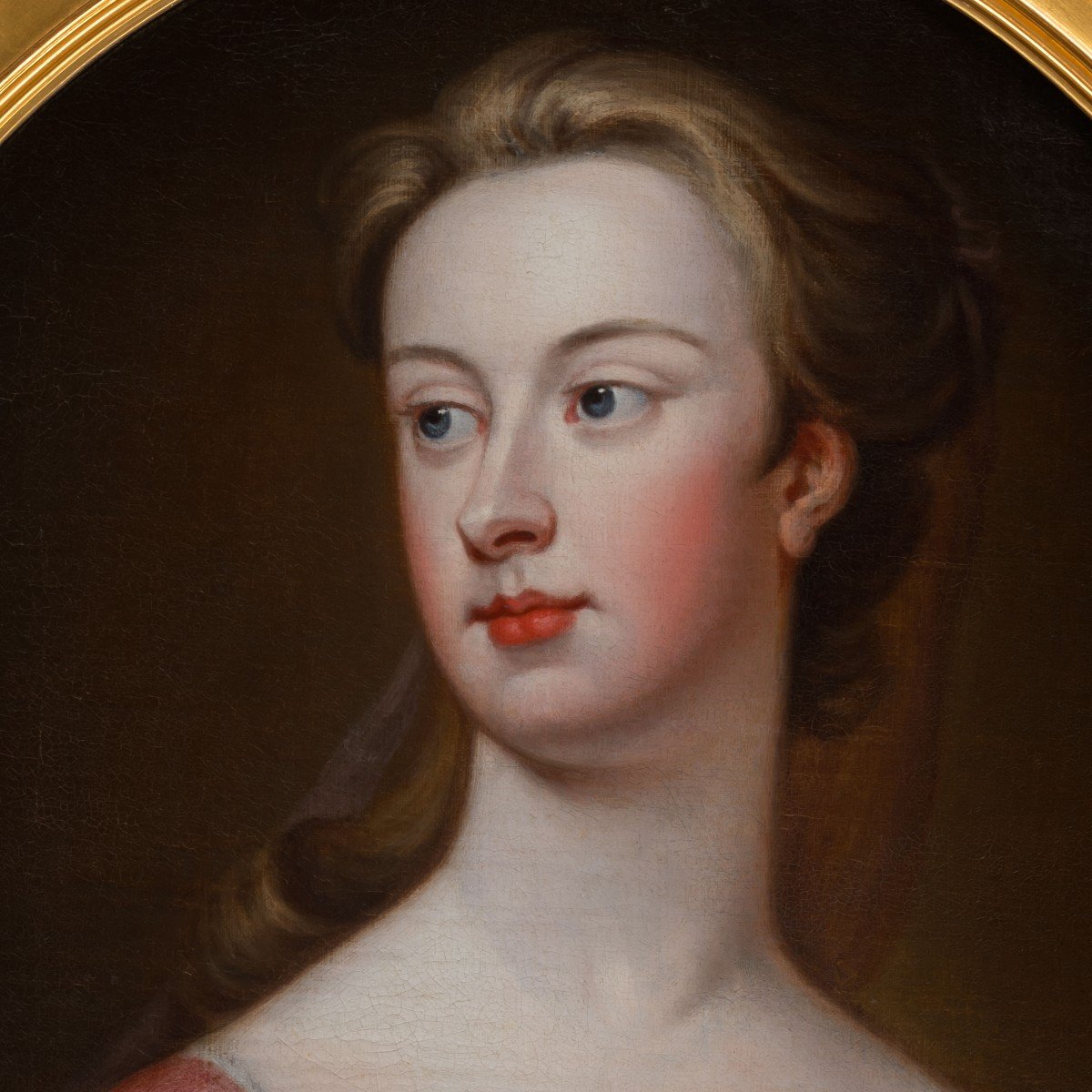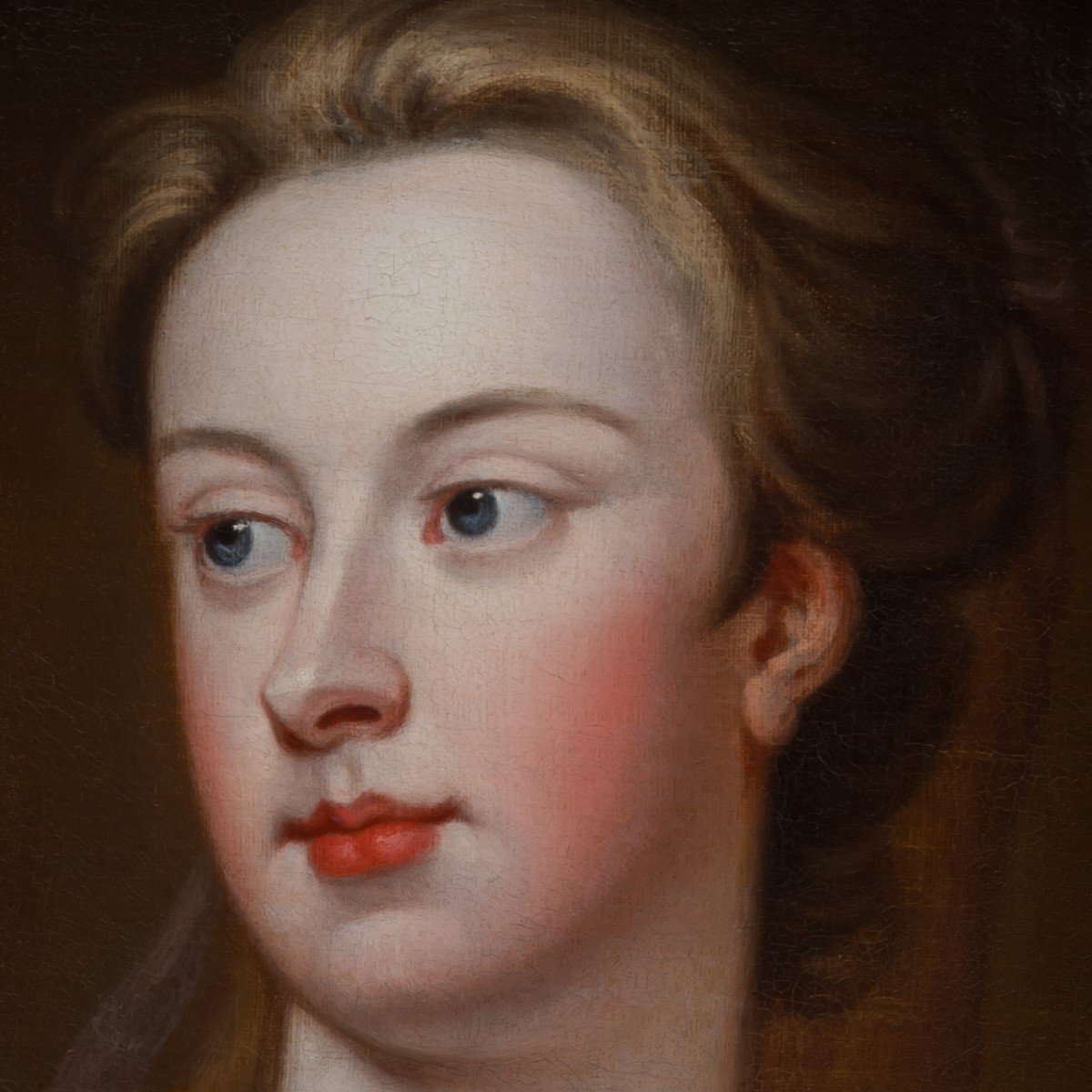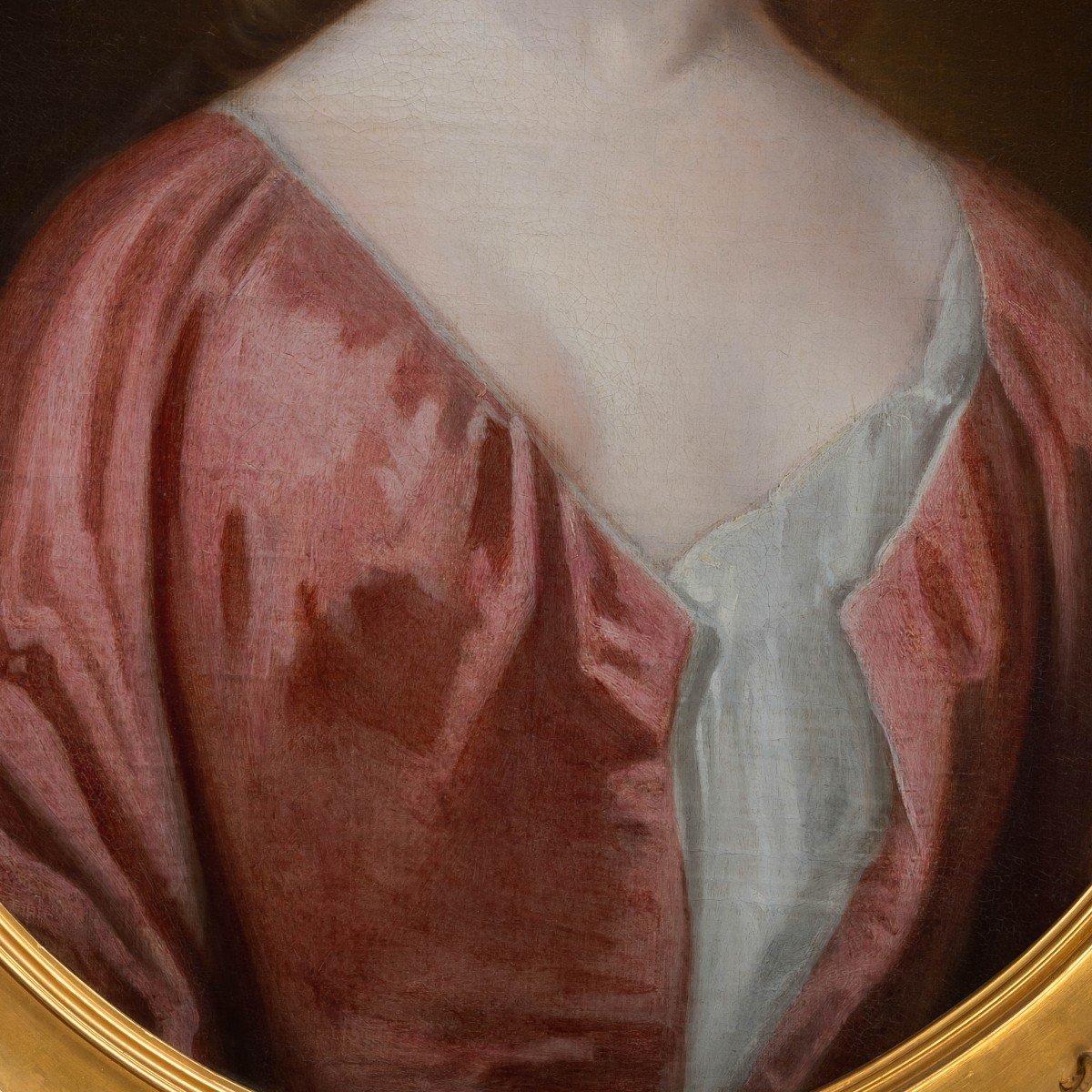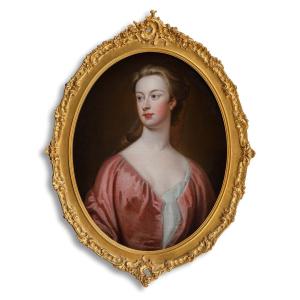The portrait genre was valued particularly highly in English society. Neither landscapes nor allegorical pictures were ever priced so highly at exhibitions and in the trade as depictions of people, from the highest aristocracy to scholars, writers, poets and statesmen. With the rich colouring and lyrical characterisation, these works are representative of the archetypal English portrait and is are very appealing examples of British portraiture.
Contained within a fine gilded antique frame.
Jonathan Richardson the Elder (1667-1745) was one of the most influential figures in the visual arts of eighteenth century England and also an accomplished poet. Richardson has been described as ''the ablest of the painters who came to prominence during the last decade of Kneller's life and who flourished after his death''. A pupil of Riley, he went on to teach both George Knapton and Thomas Hudson, and published writings on painting that called for imagination and characterisation rather than a mere mechanical reproduction of physiognomy.
He amassed one of the great collections of Old Master drawings of the age and was considered by some one of the three foremost painters of his time. By 1705 he was commanding prices for his paintings that were comparable to those of Godfrey Kneller, the most fashionable portrait painter in England at the time. George Vertue placed Richardson, along with Kneller, Michael Dahl and Charles Jervas in the elite group of portraitists who led the field in 'great business and esteem amongst people of quality' (Vertue, Notebooks, 3.138). He painted a wide range of aristocratic and professional sitters including members of noble English and Scottish families and he was invited to become Court Painter, although he turned the offer down.
His “An Essay on the Theory of Painting” published in 1715, inspired the young Joshua Reynolds to become an artist. This book is known to be the first significant work of artistic theory in English. Richardson also published with his son Jonathan the Younger (1694-1771) 'An Account of Some of the Statues, Bas reliefs, Drawings and Pictures in Italy' in 1722. The book was compiled by Richardson using material gathered by his son, Jonathan, whilst touring Italy and it became very popular, being used by young men as the basis of their Grand Tour and also as the basis for future purchases of art by wealthy collectors, therefore shaping English interest in foreign old Masters.
Provenance: (Possibly) the Bury Art Museum and Sculpture Centre in the town of Bury, England. The collection was established in commemoration of Queen Victoria's Diamond Jubilee in 1897 with the gift of more than 200 oil paintings, watercolours, prints and ceramics by the Victorian paper manufacturer Thomas Wrigley (1808–1880)


























 Le Magazine de PROANTIC
Le Magazine de PROANTIC TRÉSORS Magazine
TRÉSORS Magazine Rivista Artiquariato
Rivista Artiquariato
